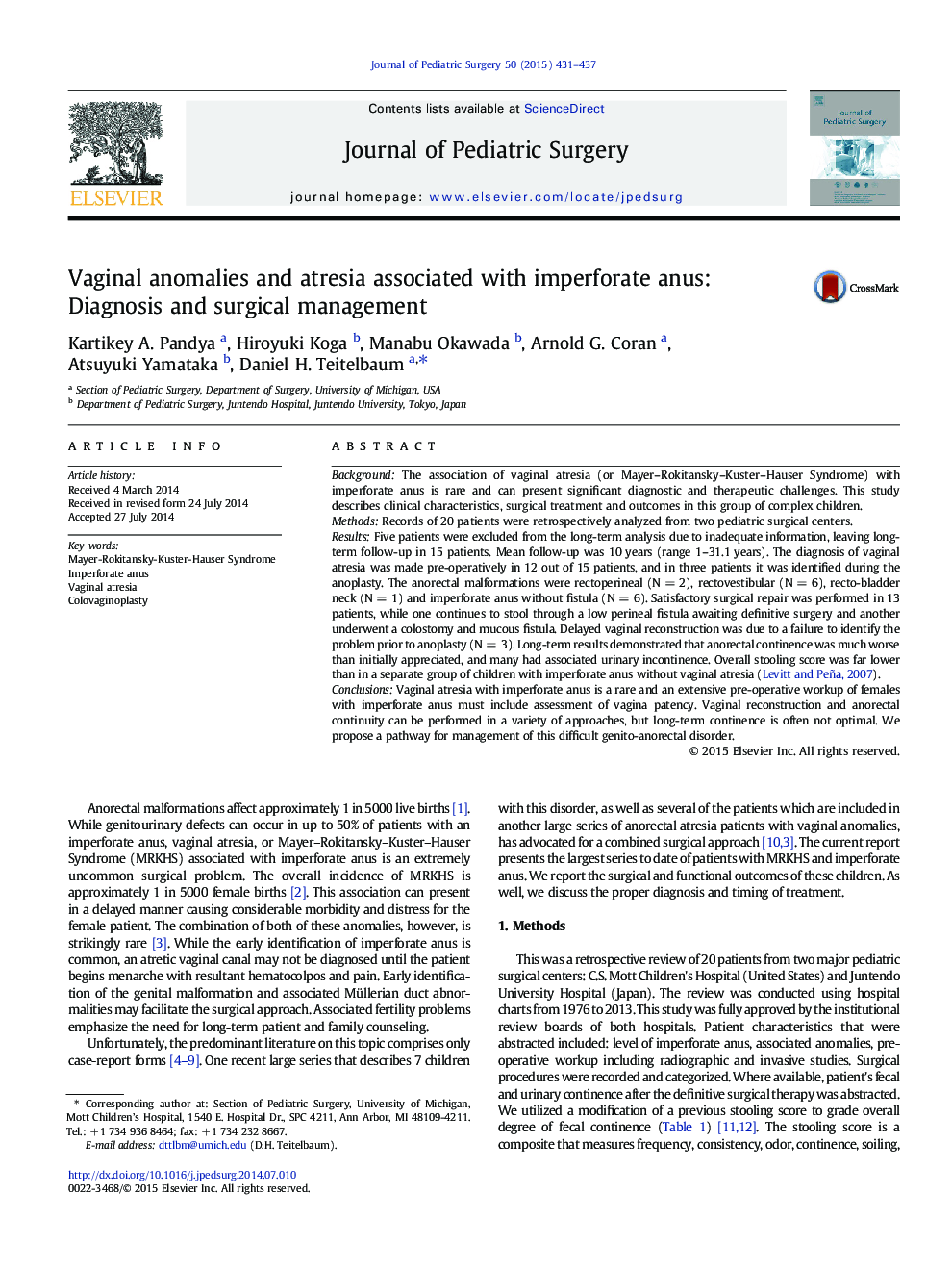| Article ID | Journal | Published Year | Pages | File Type |
|---|---|---|---|---|
| 4155489 | Journal of Pediatric Surgery | 2015 | 7 Pages |
BackgroundThe association of vaginal atresia (or Mayer–Rokitansky–Kuster–Hauser Syndrome) with imperforate anus is rare and can present significant diagnostic and therapeutic challenges. This study describes clinical characteristics, surgical treatment and outcomes in this group of complex children.MethodsRecords of 20 patients were retrospectively analyzed from two pediatric surgical centers.ResultsFive patients were excluded from the long-term analysis due to inadequate information, leaving long-term follow-up in 15 patients. Mean follow-up was 10 years (range 1–31.1 years). The diagnosis of vaginal atresia was made pre-operatively in 12 out of 15 patients, and in three patients it was identified during the anoplasty. The anorectal malformations were rectoperineal (N = 2), rectovestibular (N = 6), recto-bladder neck (N = 1) and imperforate anus without fistula (N = 6). Satisfactory surgical repair was performed in 13 patients, while one continues to stool through a low perineal fistula awaiting definitive surgery and another underwent a colostomy and mucous fistula. Delayed vaginal reconstruction was due to a failure to identify the problem prior to anoplasty (N = 3). Long-term results demonstrated that anorectal continence was much worse than initially appreciated, and many had associated urinary incontinence. Overall stooling score was far lower than in a separate group of children with imperforate anus without vaginal atresia (Levitt and Peña, 2007).ConclusionsVaginal atresia with imperforate anus is a rare and an extensive pre-operative workup of females with imperforate anus must include assessment of vagina patency. Vaginal reconstruction and anorectal continuity can be performed in a variety of approaches, but long-term continence is often not optimal. We propose a pathway for management of this difficult genito-anorectal disorder.
